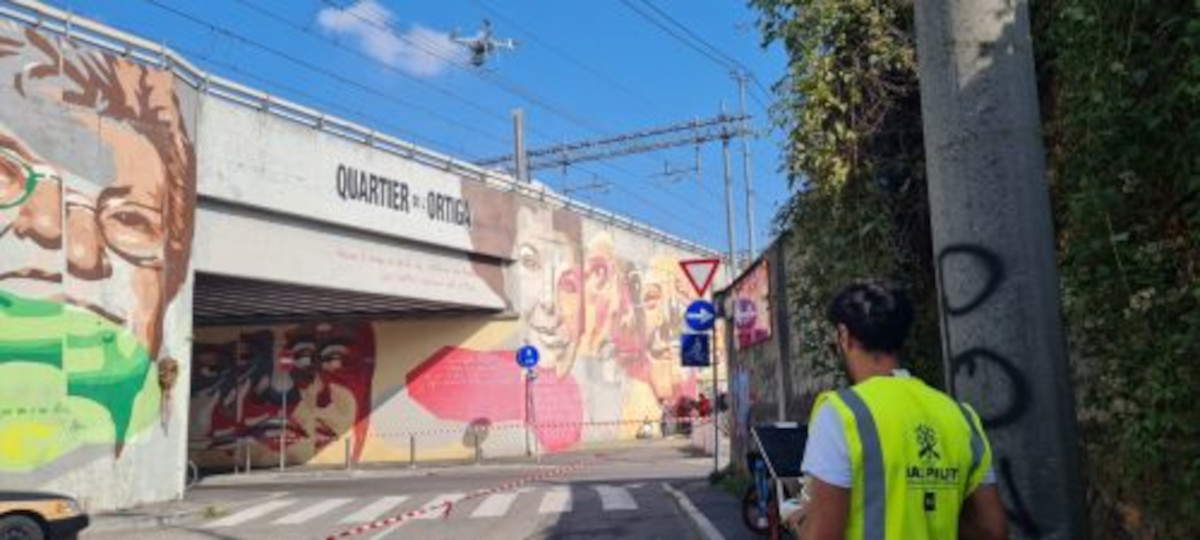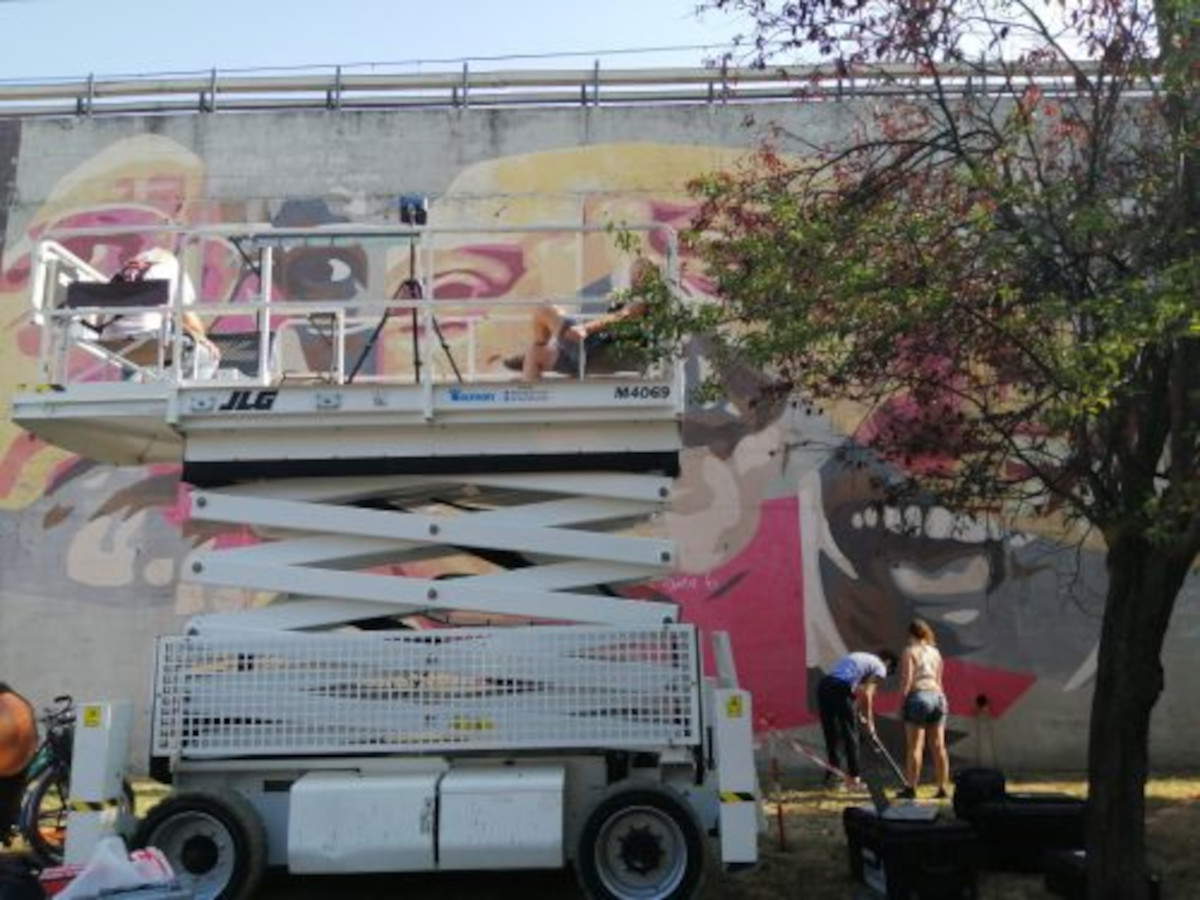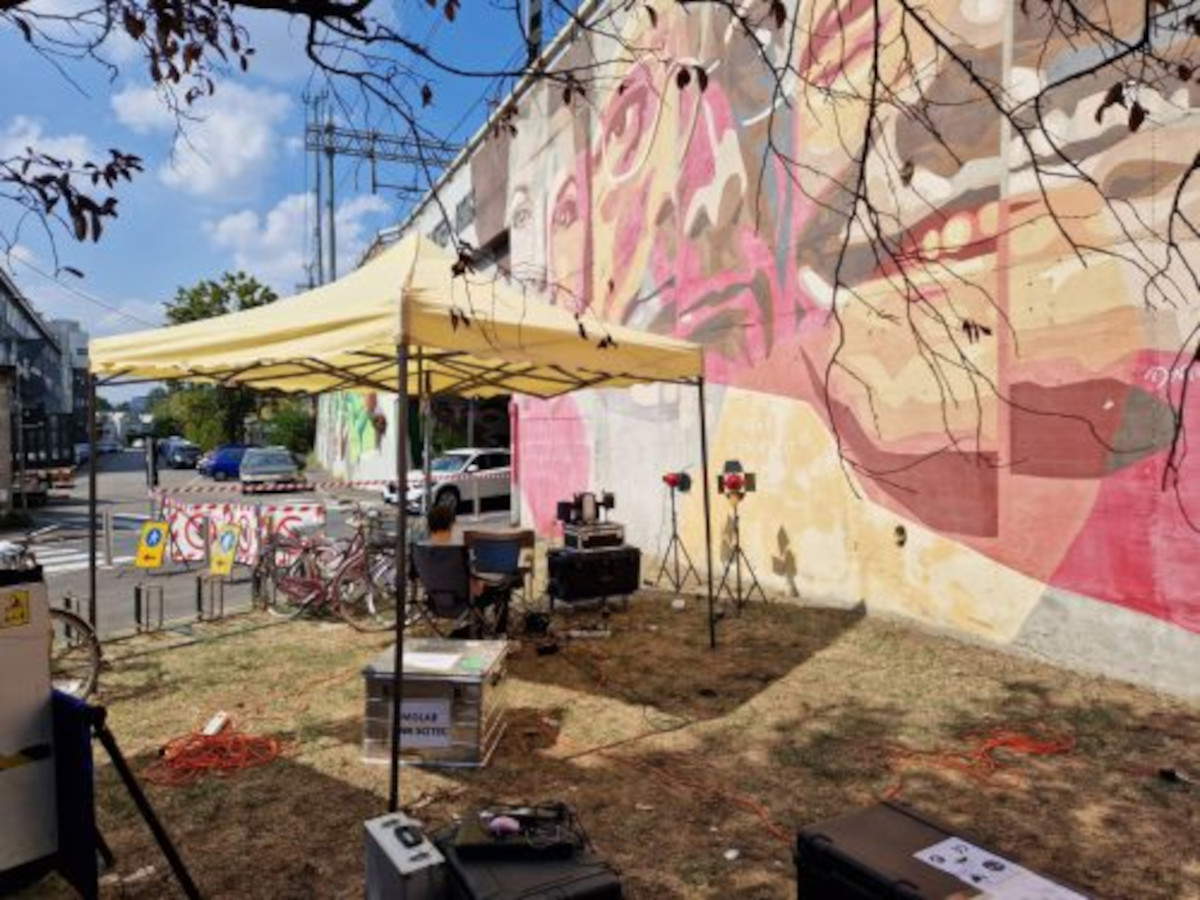A study conducted by theUniversity of Pisa, the National Research Council (CNR) and theUniversity of Perugia shows how the use of drones and new technologies can make the preservation of street art, now recognized as contemporary cultural heritage but subject to rapid deterioration, more rapid, sustainable and effective. The results of the research were published in the international journal Proceedings of the National Academy of Sciences (PNAS).
The investigation is part of SuPerStAr (Sustainable Preservation Strategies for Street Art), a project coordinated by Francesca Modugno, professor at the University of Pisa, and funded by the Ministry of University and Research under PRIN programs. The case study involved the mural Musica Popolare (2017) by the Orticanoodles collective, created in the Ortica neighborhood of Milan: a work of almost 400 square meters that stretches over a railway overpass and depicts famous protagonists of Milanese music and culture, including Dario Fo, Ornella Vanoni, Enzo Jannacci and Giorgio Gaber.
To monitor its state of preservation, researchers developed an innovative method that integrates portable spectroscopic analysis, hyperspectral imaging, multispectral drone surveys and laboratory chemical investigations on microsamples. This approach makes it possible to obtain detailed chemical maps of even large murals, reducing time and cost compared with traditional techniques. The analyses showed that red pigments (particularly PR112) were the most vulnerable, with rapid fading and formation of degradation compounds. In contrast, purple and yellow shades show greater stability, while black and gray retain their color intensity longer. Binders also play a decisive role: acrylic and styrenic resins tend to lose gloss and become powdery, especially in the presence of titanium dioxide, which accelerates degradation processes.
The Institute of Chemical Sciences and Technologies “Giulio Natta” (CNR-SCITEC), the Institute of Cultural Heritage Sciences (CNR-ISPC), the Institute of Chemistry of Organometallic Compounds (CNR-ICCOM) and the SMAArt Center of Excellence of the University of Perugia also contributed to the in situ analysis campaign.



“We have analyzed the Musica Popolare mural with an innovative method that combines laboratory chemical analysis with noninvasive in situ surveys to the use of drones equipped with multispectral cameras,” explains Ilaria Degano of the Department of Chemistry and Industrial Chemistry at the University of Pisa.
“The method makes monitoring more sustainable for local governments and at the same time more effective, because it allows the construction of a real chronology of the health status of the murals,” highlights Laura Cartechini of CNR-SCITEC.
“This research is the first proof of concept of a scalable model for the study and preservation of street art. The hyperspectral drone data, already acquired and being analyzed, will allow us a further leap forward in terms of accuracy, keeping costs low and survey times fast,” adds Nicola Masini of CNR-ISPC.
“In this specific case, the Center’s visible and near-infrared hyperspectral imaging equipment has been used, with measurements made by means of mobile platforms, in order to ’calibrate’ the response of CNR-ISPC’s multispectral instrumentation mounted on drones,” concludes Aldo Romani, director of the SMAArt Center-University of Perugia. “The results obtained are extremely promising with a view to effectively monitoring the health of large-scale polychrome works such as those of Street Art.”
 |
| Street art: study reveals which colors and binders fade and accelerate degradation processes |
Warning: the translation into English of the original Italian article was created using automatic tools. We undertake to review all articles, but we do not guarantee the total absence of inaccuracies in the translation due to the program. You can find the original by clicking on the ITA button. If you find any mistake,please contact us.